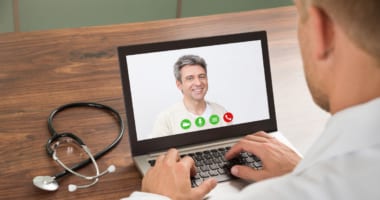 As the COVID-19 pandemic persists through the summer, allergy/immunology practices are adjusting to a new normal. Nine members of the Practice Management Committee share key things they’ve learned regarding how to practice in the COVID-19 world. Last week’s article covered human resources/staffing, operations/safety and scheduling. This week get tips on billing, patient communication, skin testing and allergy shots.
As the COVID-19 pandemic persists through the summer, allergy/immunology practices are adjusting to a new normal. Nine members of the Practice Management Committee share key things they’ve learned regarding how to practice in the COVID-19 world. Last week’s article covered human resources/staffing, operations/safety and scheduling. This week get tips on billing, patient communication, skin testing and allergy shots.
These tips are not official College recommendations; they represent the opinions and experiences of individual members of the Practice Management Committee.
Clearly, the impact of the pandemic varies greatly by location and timing, and things are shifting frequently. What works for one practice might not make sense for another. However, we’re certain you’ll find several pearls of wisdom among the tips below that you can put into place now to help your practice.
Billing
- Make a spreadsheet of the different insurance companies’ rules on reimbursement during the pandemic and keep it updated. “Many insurers allow you to charge for an office visit even if it was done as a phone visit with certain modifiers; keep it updated as insurance companies change their rules on reimbursement often,” advises John Tole, DO, member of the Practice Management Committee. You can find current information about insurance company COVID cost-sharing waivers and coverage expansion in the College’s recent article.
Patient Communication
- Call all scheduled patients the day before an appointment with screening questions and inform them of what you are doing at the practice to keep everyone safe. “This helps put the patients at ease and has reduced our no-show rates, which are actually well below our pre-COVID no-show rates,” said Charlie Furr, Jr., practice administrator and member of the Practice Management Committee.
- Develop telemedicine “how to” guides available on your website for connecting to a telehealth visit via portal, computer, or app.
- Reinforce the benefits of a telemedicine visit through web/social media/patient communications.
- When you’re ready to see patients in person, call all patients who cancelled or no-showed over the previous few months. “We were able to reschedule a significant number of our patients,” noted Stanley Fineman, MD, MBA, FACAAI, advisor to the Practice Management Committee.
- Be sure to communicate with patients clearly about your scheduling and safety protocols so they know exactly what to expect. The College has created a resource to help you develop your patient communications during this time.
- Maximize patient communication through your website, social media channels and direct email communications.
- Advertise that you’re an immunologist as well as an allergist. Patients are concerned about getting COVID-19; if they have a history of recurring infections, you are the specialists who can look into issues with their immune system.
Allergy shots and skin testing: one solo practitioner’s workflow
Kevin McGrath, MD, FACAAI, chair of the Practice Management Committee, shared his workflow for allergy shots and skin testing below:
- Patients check in by phone with the front office staff in a different room and are told to come in when the nurse is ready.
- Patients enter one at a time for allergy injections. Our waiting room is now set up as a one-nurse station for shots only. Central air is on with outside air, so turnover is frequent. There is also a HEPA filter in the room. The room is cleaned in between each patient.
- Both patient and nurse wear masks during allergy injections. Patients then wait in their cars, and we recommend they have epinephrine autoinjectors and another adult with them. After 30 minutes the patient checks in again with the front office staff by phone before leaving.
- We are doing limited skin tests with significant time between each skin test visit. One nurse just does skin testing, and those patients come in using a different entrance. There’s a HEPA filter in the room plus air conditioning with continuous fan use. The room is cleaned in between each patient.
For more information on practicing during COVID-19, check out the College’s COVID-19 resource page. It provides up-to-date information on clinical issues, coding, telemedicine, practice management and patient information.


